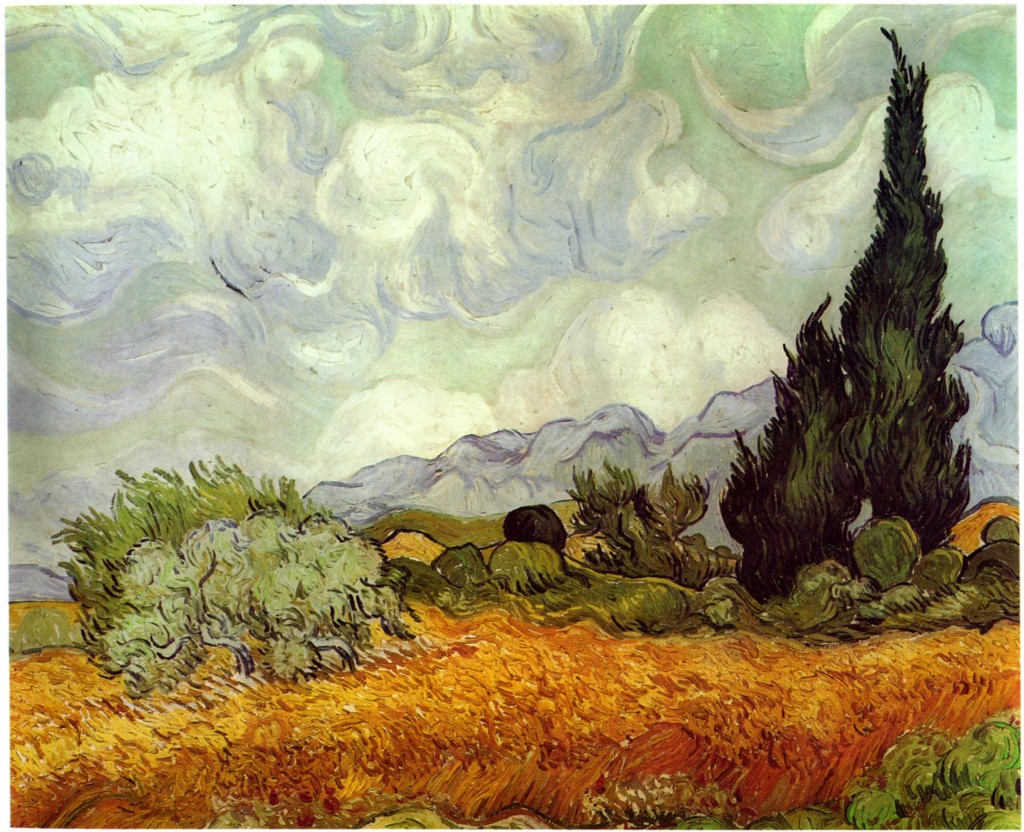
“It is clear that Van Gogh was not mainly concerned with correct representation. He used colors and forms to convey what he felt about the things he painted, and what he wished others to feel. He did not care much for what he called ‘stereoscopic reality,’ that is to say, the photographically exact picture of nature. He would exaggerate and even change the appearance of things if this suited his aim… [He] took the momentous step of deliberately abandoning the aim of painting as an ‘imitation of nature’… Van Gogh felt that by surrendering to visual impressions, and by exploring nothing but the optical qualities of light and color, art was in danger of losing that intensity and passion through which alone the artist can express his feeling to his fellow men.”
E.H. Gombrich, “Chapter 26: In Search of New Standards,” The Story of Art, 15th edition

I just saw this at the Met! Photos do not to it justice! The colors and textures stand out so much better! It’s beautiful!
Do not *do* it justice. Heehee
I’d love to see an original Van Gogh! His exuberant use of color and texture makes printed (or photographic) reproduction impossible, doesn’t it? …though the Met does print books with high-resolution details of his paintings, and they do almost pop off the page! Actually, Gombrich frequently complained in his book about the total inadequacy of the printed reproductions, and kept urging me (the reader) to visit Vienna and Paris and see the paintings in person. (!) Maybe one day…
I hope you enjoyed your visit to the city and the Met!